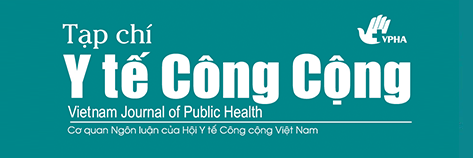Children as change agents in influencing adults’ behaviors: a case study to decrease children’s exposure to secondhand smoke at home in Vietnam
Abstract
Keywords
Full Text:
PDFReferences
Onyango-Ouma, W., Aagaard-Hansen, J. & Jensen, B. B. (2005). The potential of schoolchildren as health change agents in rural western Kenya. Soc Sci & Med, 61(8), 1711-1722.
Christensen, P. (2004). The health-promoting family: a conceptual framework for future research. Soc Sci & Med, 59(2), 377-387.
Alwan, N., Siddiqi, K., Thomson, H., Lane, J. & Cameron, I. (2011). Can a community-based ‘smoke-free homes’ intervention persuade families to apply smoking restrictions at homes? J Public Health, 33(1), 48-54.
Mwanga, J. R., Jensen, B. B., Magnussen, P. & Aagaard-Hansen, J. (2007). School children as health change agent in Magu, Tanzania: a feasibility study. Health Promot Int, 23(1), 16-23.
Siddiqi, K., Sarmad, R., Usmani, R. A., Kanwal, A., Thomson, H. & Cameron, I. (2010). Smoke-free homes: an intervention to reduce second-hand smoke exposure in households. Int J Tuberc Lung Dis, 14(10), 1336-1341.
Xuan, L. T. T., Rheinlander, T., Hoat, L. N., Dalsgaard, A. & Konradsen, F. (2013). Teaching hand washing with soap for schoolchildren in a multi-ethnic population in northen rural Vietnam. Global Health Action 6, 20288.
Nguyễn Khắc Hải, Đặng Anh Ngọc, Nguyễn Tuấn Lâm và Nguyễn Văn Thích (2016). Hiệu quả dự án “Làm sạch bầu không khí ô nhiễm khói thuốc lá: Tạo môi trường lành mạnh và an toàn cho trẻ em”. Tạp chí Y tế công cộn, số 6, tr 41-46.
WHO (2015). Global Adult Tobacco Survey. Fact sheet. Vietnam 2015. Available at: https://www.who.int/ncds/un-task-force/gats-vietnam2015.pdf?ua=1, accessed on 20 April 2019.
National Assembly of Vietnam (2013). Law on Tobacco Control. Law number 09/2012/QH13.
WHO (2009). WHO report on the global tobacco epidemic, 2009: Implementing smoke-free environments.
Le Thi Thanh Huong, Tran Khanh Long, Le Vu Anh, Margaret Cook, Mike Capra (2016). Decreasing in-home smoking of Adults – Results from a school-based intervention program in Viet Nam. AIMS Public Health, 3(4), 863-879.
Borgers, N., De Leeuw, E. & Hox, J. (2000). Children as respondents in survey research: Cognitive development and response quality Bulletin de Méthodologie Sociologique, 66(1), 60-75.
Nga, P. T. Q. & Ha, L. T. T. (2007). Evaluation of the effectiveness of the project 'Reducing social acceptability of smoking in Vietnam'. Hanoi: Vietnam Public Health Association & Health Bridge Canada.
Lê Thị Thanh Hương, Mike Capra, Margaret Cook, Lê Vũ Anh (2011). Nghiên cứu thăm dò tính khả thi của chương trình can thiệp “Trẻ em nói không với hút thuốc lá thụ động”. Tạp chí Y tế công cộng, số 21, trang 24-31.
Precioso, J., Samorinha, C., Calheiros, J. M., Macedo, M., Antunes, H. & Campos, H. (2010). Secondhand smoke (SHS) exposure in children. An evaluation for a preventative measure. Rev Port Pneumol, 16(1), 57-72
Greenberg, M. T., Weissberg, R. P., O'brien, M. U., Zins, J. E., Fredericks, L., Resnik, H. & Elias, M. J. (2003). Enhancing school-based prevention and youth development through coordinated social, emotional, and academic learning. Am Psychol, 58(6-7), 466-474.
Harvey J. & Chadi N. (2016). Preventing smoking in children and adolescents: Recommendations for practice and policy. Paediatr Child Health, 21(4): 209-214.



